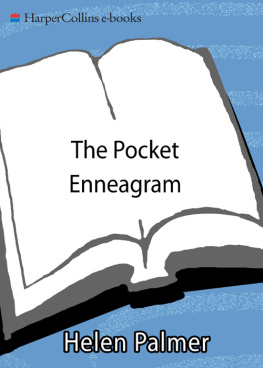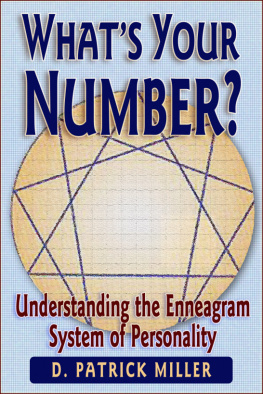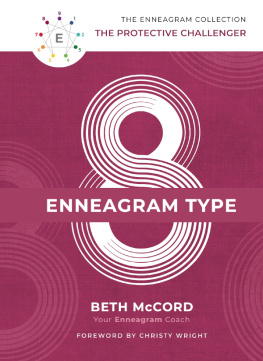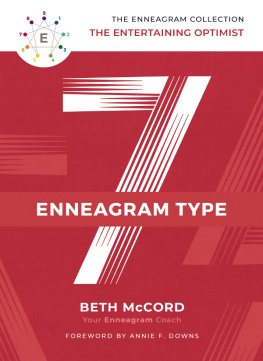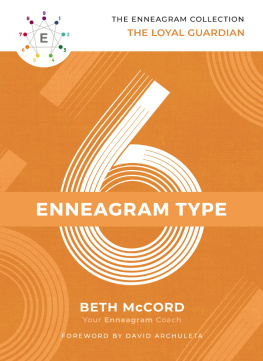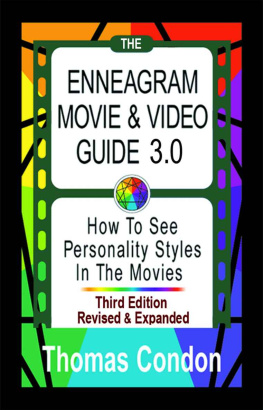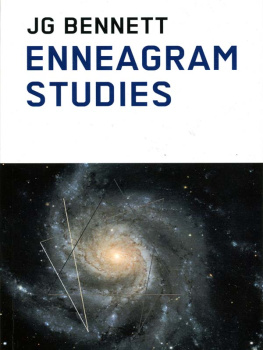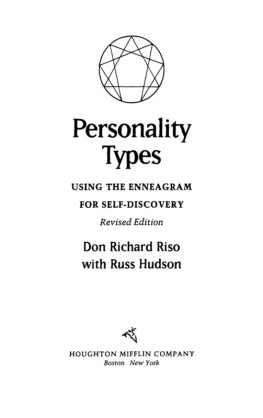The Pocket
Enneagram
UNDERSTANDING THE 9 TYPES OF PEOPLE
Helen Palmer

To the next generationthe children of our students
Contents
Neither Helen Palmer nor HarperCollins Publishers is affiliated with Arica Institute, Inc., nor has this book been endorsed or authorized by Arica Institute, Inc. or by Oscar Ichazo.
The personality types described in this book are part of a human development system called the Enneagram. Ennea means nine in Greek, and gram means modelthe diagram models nine different points of view about life. Each worldview is rooted in a specific emotional passion that developed as a childhood coping strategy. We are usually unaware of our ruling passion, because it operates as a blind spot, a hidden focus that affects decision making and relationships of all kinds. This book contains a short description of the types and of the ways in which each passion is acted out in one-to-one relationships, social interactions, and the arena of personal well-being that is called self-survival.

THE PASSIONS
It is the nine distinctive passions that unite the thoughts, feelings, and aspirations of each personality, usually with the effect of creating a systematic bias about life. The Pride type sees that people are in need of help. The Lust type sees the world in terms of control. The Envy type sees that something is missing, and so on through all nine types. Although they are named in the negative, the passions can also be seen as the raw material, the compost, the qualities of human nature that link each type to specific aspects of higher awareness.
I see a bit of myself in each of the nine perspectives, because they are all grounded in an appropriate emotional response. I do not have to be a Nine to merge with a loved ones agenda, nor must I be a Four to share anothers pain. Each of these responses is appropriate and normal. How natural to feel afraid when we are threatened. How human to be angry when we feel misused.
THE PASSIONS AND ARROWS

The nine-pointed star, including the flow pattern of arrows, is attributed to Gurdjieff, who ascribed it to Sufi sources. The passions of sacred tradition, as described by Chaucer, Dante, and other Christian authors, were arrayed on the Gurdjieff star by Oscar Ichazo, a seminal figure in contemporary Enneagram studies.
THE ARROWS
Each type has three major aspects: the type proper, the types reaction in times of security, and a different reaction that emerges during periods of stress or risk. The diagrams system of interlocking lines allows us to predict changing attitudes and perceptions that naturally occur when we feel secure and when we move into stress. Defenses relax during secure periods of life, such as when we have a satisfying job or a promising relationship. Risk, by contrast, implies an external stressor that creates tension. Following the flow pattern of the arrows, in risk situations you are likely to move with the arrow and adopt characteristics of the type to which the arrow points; in security you will move against the arrows, into some of the behaviors of the type in the reverse direction.
FROM VICE TO VIRTUE
Modern psychology is less than one hundred years old, but the study of type that sees the passions as a hidden feature of personality has a far longer history. In the West the passions are best known as Christianitys seven capital vices, with the addition of two generic tendencies that all types hold in common, to a total of nine (the additions are Deception [Three] and Fear [Six]). Rather than being a new psychological discovery, it would seem that our Enneagram of personality types is really a modern rediscovery of a very old concept of human development.
The Enneagram indicates that the emotional energies invested in the passions can be converted to aspects of higher consciousness. Furthermore, we are naturally motivated to transform our passion to its corresponding virtue. For example, people who feel caught in fear cannot help but value the virtue of Courage, and those who have lost their agenda (SlothNine) constantly seek Right Action in life. Whether we know it or not, we seem to be set upon a path that leads from vice to the virtues of higher being.
The higher aspects of type are not merely effective psychological habits. They are ways of knowing and being that have their source in the essential, or permanent, dimensions of existence, as contrasted with the changing cycle of ordinary events. Courage, for example, emanates from essence itself, providing a source of help if we can draw on its intelligence in times of need. The qualities that emanate from essence are not the same as the clarity of mind and emotional generosity displayed by people who are psychologically mature. These gifts of the spirit belong to the realm of the divine; they cannot be grasped by analysis or recognized through our emotions because they originate in an order of consciousness beyond the limits of ordinary perception.
In linking the ruling passion of type to specific qualities of higher being, the Enneagram unites the precision of a Western clinical model with the search for existential and spiritual meaning. The Enneagrams psychological focus concerns the nine personalities and the ways in which they interact, but the power of the system lies in the links between the passions and specific aspects of higher being.
SUBTYPES
The passions can be seen as the agent of change from ordinary to higher consciousness. They are acted out through three activities that are significant enough to be called the Enneagram subtypes. These accentuated preoccupations shape the quality of our relationships and affect decisions of all kinds, often in ways that are hidden from us.
For example, the three ways that Givers (Twos) express the passion of Pride are through social ambition, one-to-one seduction/aggression, and a privileged attitude toward personal survival. These activities regulate the emotional energy of Pride and are a major factor in relating to Twos.
Subtype behaviors command a great deal of energy and attention, because they are expressions of the passions in the basic human experience of survival. Self-preservation concerns personal day-today survival, the sexual sector of life concerns survival (genetic) through time, and the social sector concerns survival in the group (herd). Whether the key behaviors assigned to each sector are actually mitigated by instinct is open to question. They may be simply type-related concerns about personal, sexual, and social survival.
SOME ENNEAGRAM HISTORY
George Ivanovich Gurdjieff (18721949), a spiritual teacher of enormous personal magnetism, is credited with bringing the diagram to the West. Stating that he learned the Enneagram from Sufi sources, he introduced the nine-pointed star, including the internal flow pattern that unites the points in specific ways. Living at a time when Freuds ideas about the unconscious had yet to surface, Gurdjieff called the psychological blind spot of type Chief Feature. The nine-pointed star diagram became the signature of his work.
Always the same motive moves Chief Feature. It tips the scales. It is like a bias in bowling, which prevents the ball going straight. Always Chief Feature makes us go off at a tangent. It arises from one or more of the seven deadly sins, but chiefly from self-love and vanity. One can discover it by becoming more conscious; and its discovery brings an increase of consciousness.
Next page
